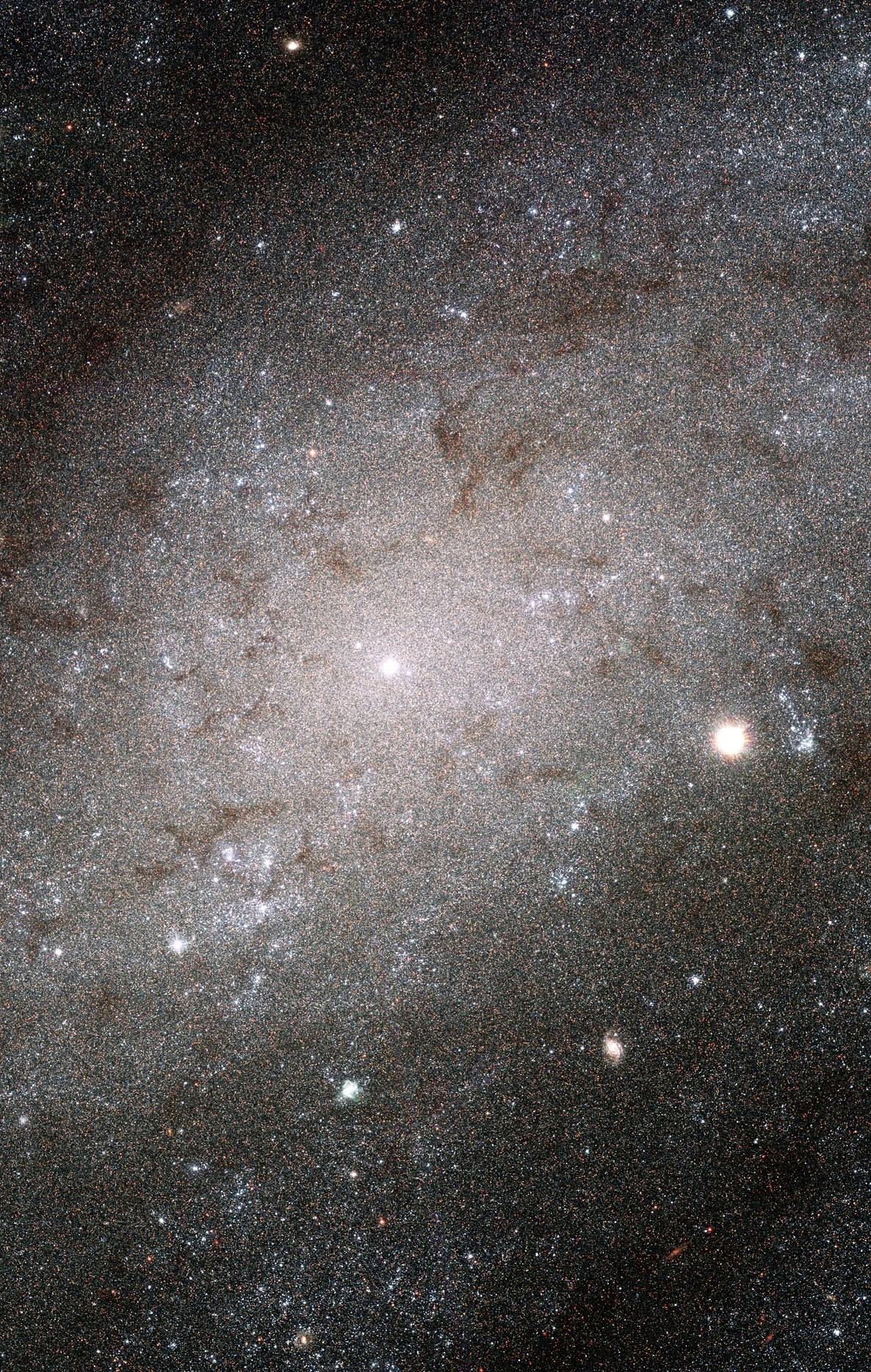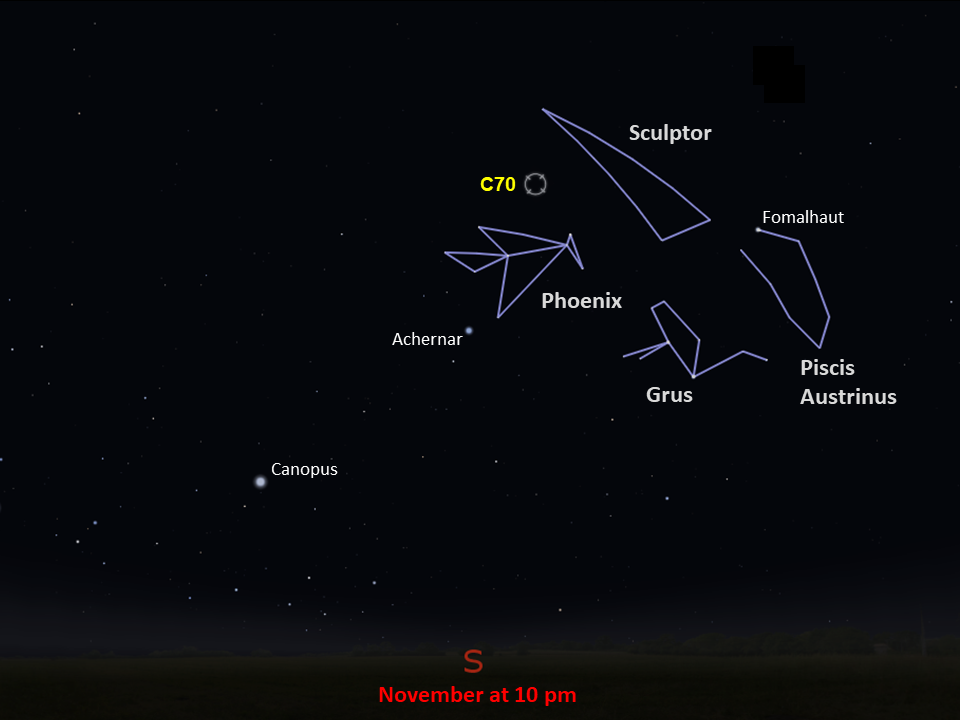Caldwell 70
Also known as NGC 300, Caldwell 70 is a member of a nearby Sculptor group of galaxies.
Distance
7,500 light-years
Apparent Magnitude
8.1
constellation
Sculptor
object type
Spiral Galaxy

What resemble grains of sand in this Hubble image are actually individual stars embedded deep in the heart of the nearby spiral galaxy Caldwell 70. Hubble's exquisite resolution allows us to see the galaxy’s stars as distinct points of light, despite the fact that the galaxy is about 6 million light-years away.
Caldwell 70 has sweeping blue spiral arms with vigorous star formation throughout. The inner region of the galaxy, an area spanning about 7,500 light-years, is pictured here. At the center is the galaxy’s bright, densely packed core surrounded by tendrils of dark dust meandering among the stars in the galactic plane.
While Caldwell 70 is one of the Milky Way’s closest galactic neighbors, it’s so far away that only the brightest stars can be picked out in ground-based telescopes. With a magnitude of 8.1, the galaxy can be seen through a small telescope, but don’t expect to see an image like this one! With a resolution some 10 to 20 times better than ground-based telescopes, Hubble's Advanced Camera for Surveys resolves many more stars in this galaxy than can be detected from the ground. Hubble's unique ability to distinguish so many stars in Caldwell 70 helped astronomers test a new technique for measuring distances to other galaxies using blue supergiant stars and compare that technique to more traditional measurement methods.
Also known as NGC 300, Caldwell 70 is a member of a nearby collection of galaxies called the Sculptor group, named for the southern constellation where the galaxies can be found. Discovered from Australia by Scottish astronomer James Dunlop in 1826, Caldwell 70 appears low in the autumn sky in the Northern Hemisphere but is best viewed in the springtime from the Southern Hemisphere. Caldwell 70 spans nearly the same amount of sky as the full moon.
For more information about Hubble’s observations of Caldwell 70, see:
Hubble Sees Stars as Numerous as Grains of Sand in Nearby Galaxy

Glossary
Magnitude - The brightness of an astronomical object, represented by a number; bright objects have low numbers on the magnitude scale, while dim objects have high numbers.
Spiral Galaxy - A galaxy characterized by its spiral structure, with star-filled arms that extend out from the center of the galaxy and host regions of star formation.
Explore Hubble's Caldwell Catalog
The following pages contain some of Hubble’s best images of Caldwell objects.

Caldwell 1
Also known as NGC 188, this group of stars formed from a large cloud of gas making the stars roughly…

Caldwell 2
This shell of gas is expanding outward, away from the dying star within.

Caldwell 3
This barred spiral galaxy was first spotted by British astronomer William Herschel in April 1793 in the constellation Draco.




